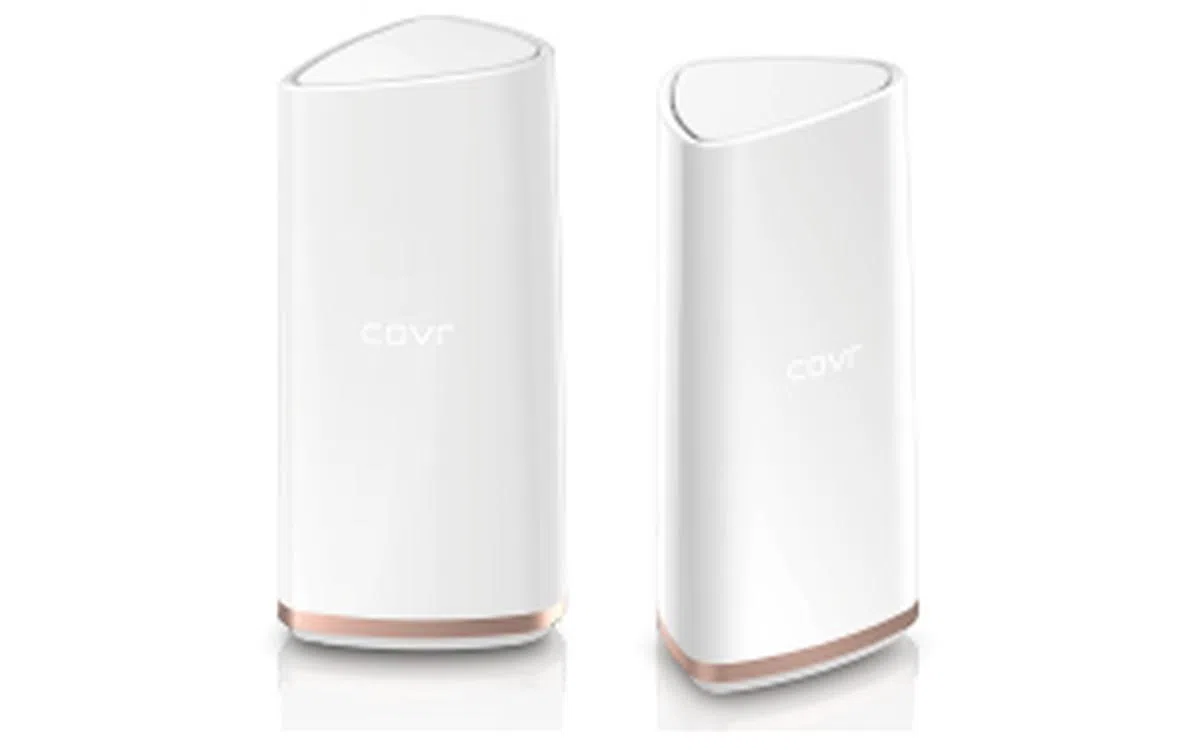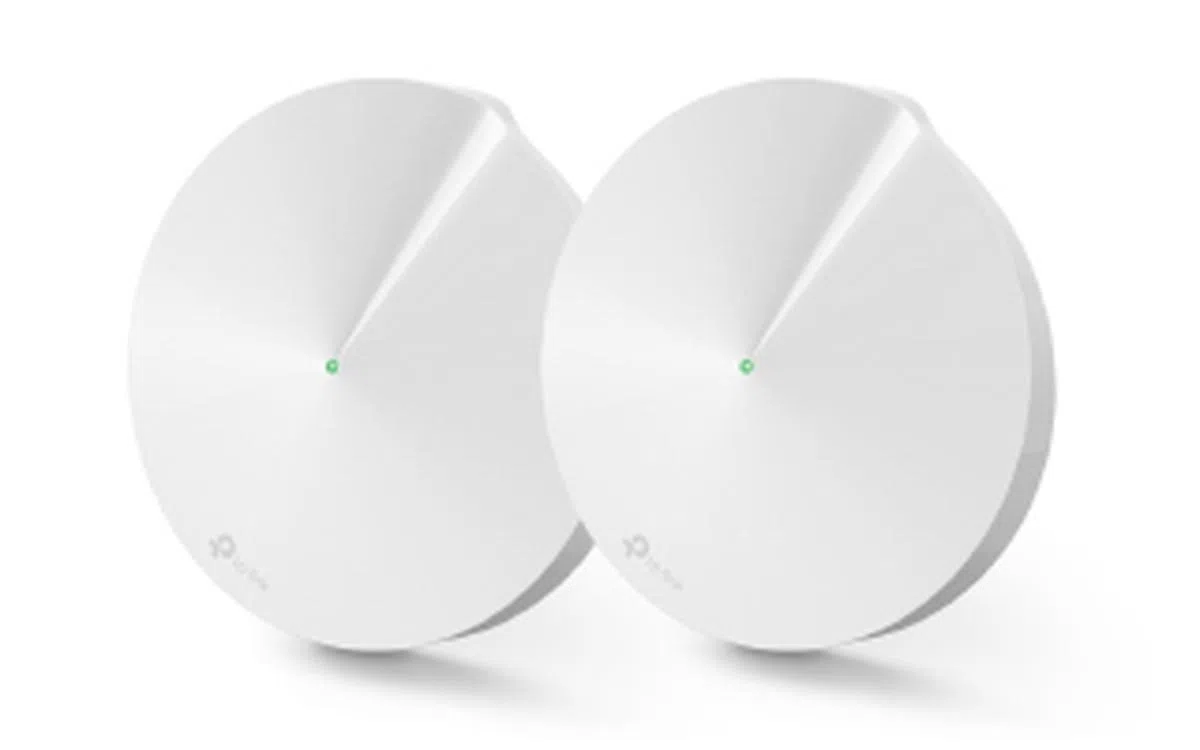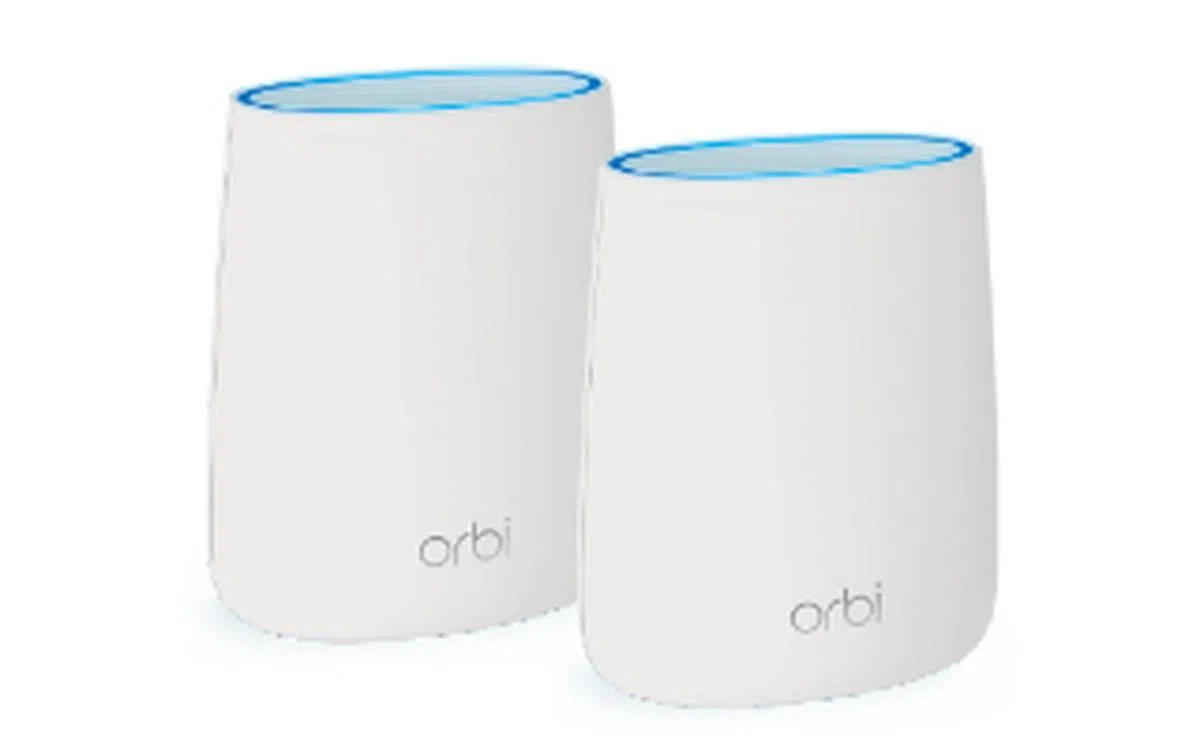Tri-band mesh networking shootout: D-Link vs. Netgear vs. Synology vs. TP-Link
We put together the newest bunch of tri-band mesh networking systems together in this massive shootout - who would come up on top?
By Kenny Yeo -
Note: This article was first published on 18th March 2019.

Note: This shootout first appeared in the March 2019 issue of HWM.
Blanketing your home in Wi-Fi
Mesh networking systems are incredibly helpful at ridding homes of Wi-Fi dead spots but with so many to choose from today, it can be difficult to tell which is right for you. We put four new tri-band systems to the test to find out which is best. To get yourself up to speed on the basics of mesh networking, here's our handy guide.
D-Link Covr-2202

The D-Link Covr-2202.
The Covr-2202 is D-Link’s newest mesh networking system and its flagship - if you discount the earlier Covr-3902 which isn’t really a mesh networking but rather a traditional router and range extender setup. The Covr-2202 is a true mesh networking system in the sense it uses a daisy-chain topology, this makes it much more flexible when deploying around the house as compared to a system that uses the more rigid star topology. For ease of setup, the nodes are paired at the factory and a label that reads “Covr Point A” tells you which router has been configured as the primary router that you should connect to your modem. For now, up to four nodes can be added to the network but D-Link aims to increase that to ten in the future to support folks with sprawling estates.

At the bottom of each unit are two Gigabit Ethernet ports.
The nodes come in small little towers and have a pleasant design. They are mostly white with a ring of rose gold near the bottom. A Covr logo that lights up acts as a handy status indicator. At the bottom of each node are two Gigabit Ethernet ports and a button for Wi-Fi Protected Setup. As mentioned, the nodes are paired at the factory so no further setup is required. Positioning, however, is crucial since you need to be close enough to the primary node to ensure that the two can establish a good connection. To tell if the connection is good enough, look at the Covr logo. A solid white light indicates a strong connection, whereas a blinking white light tells you that connection isn’t ideal and that you should move the two nodes closer together; subtle and straightforward cues.
The Covr-2202 utilizes a tri-band design consisting of a single 2.4GHz network and two 5GHz networks. The advantage over dual-band systems is that it can dedicate its additional 5GHz network to backhaul communications. This usually results in improved overall network performance. In our tests, the Covr-2202 was the fastest router by a considerable margin. Its main advantage over its rivals was its excellent range. Most routers’ speeds will start to take a tumble at 10 meters but the Covr-2202 still maintained very impressive speeds at this range. Its mesh performance was very commendable too.

The D-Link Wi-Fi app is perfunctory and gives users access to basic features of the router.
The Covr-2202 is not without its failings and that has to do with its clunky user interface and lack of features. The Covr-2202 can be managed using the D-Link Wi-Fi app or a browser. The latter, however, has more options. With the app, users can change their router’s Wi-Fi settings, create a guest network, and parental controls. Using a web browser opens up port forwarding, dynamic DNS, website filtering, and QoS features. The Covr-2202’s suite of features might be enough for casual users, but readers with more advanced networking needs might want to stick to their traditional routers.
Netgear Orbi (RBK20)

Netgear Orbi RBK20.
Following the success of their AC3000-class Orbi mesh networking system, Netgear decided to release a simpler and more affordable version this year with a lower AC2200 speed rating. Netgear offers their mesh networking systems in a variety of bundles and the one that we are testing specifically is the RBK20, which comes with an Orbi router and an additional node, or, as Netgear calls it, satellite.
The design is familiar. Essentially, the AC2200 Orbi is a more compact version of the larger AC3000 units. It is a small tower decked entirely in white with a ring of light at the top that functions as a status indicator. At the bottom are two Gigabit Ethernet ports - one for WAN and the other for LAN. Like most mesh networking systems, its design is pleasant which allows it to blend into homes unobtrusively.
Setting up is easy but slow. Like most mesh networking systems, simply download the Orbi app on your iOS or Android device and follow the on-screen instructions. The initial setup will prompt users to position the satellite Orbi in their desired spot and the setup process will proceed to detect it. If the satellite can’t be found, a guide showing you how to read the status indicator will appear. If the ring of light around the satellite Orbi is showing amber or magenta, you should position the satellite closer to the main Orbi unit.

Each node has two Gigabit Ethernet ports.
The Orbi app is simple to use but only has very basic features. You have your usual Wi-Fi settings, guest network, internet speed test, traffic speed test, parental controls, and that’s it. For more advanced features, users will need to use the web interface, which gives access to port forwarding, dynamic DNS, VPN, and even remote management options.

To get the full features of the Circle with Disney parental control, a paid subscription is required.
The parental controls feature is frustrating to use. Unlike other systems, it is not built-in and requires registration either through Netgear OpenDNS or Circle with Disney. Both are not ideal, because the former is basic and the latter requires a paid subscription of $6.98 a month to unlock its full suite of features. There’s a free to use service tier of Circle with Disney but it is painfully basic. That said, if the price doesn’t put you off, Circle with Disney is actually a powerful parental control utility. However, it is worth noting that some other networking brands have parental control features that are at least comparable and cost nothing.
Performance is generally good but the Orbi exhibited some erraticism. At close range, the main Orbi router put up competitive speeds but it tapered off dramatically when it was moved farther away. Mesh performance was good but the Orbi system was slow to switch to the closest unit. This meant that the client device was still connected to the main Orbi router even though the satellite was clearly closer. It took a while but once the client device was connected to the satellite, speeds picked up significantly.
Synology MR2200ac

The Synology MR2200ac.
The MR2200ac is Synology’s first mesh networking system and third networking device. The company’s first router was the RT1900ac which they then followed up with an 802.11ac Wave 2 AC2600-class router called the RT2600ac. Of all the systems in this shootout, the MR2200ac is the most business-like in design. It comes in black and is larger than its rivals. It looks like more a traditional router than a stylish mesh networking unit. As a result, it might look out of place in some homes. The upside to this is that it has more ports. Apart from the usual two Gigabit Ethernet ports - one for WAN, another for LAN - it also has a USB 3.0 port that can be used for file and print sharing.

The Synology MR2200ac is the only mesh networking system here to have a USB 3.0 port.
Since the MR2200ac is sold separately, you’ll have to pair units together to create a mesh network. Fortunately, doing so is easy. Users have the choice of using either the excellent DS router app - available on iOS and Android - or the equally excellent Synology Router Management (SRM) via the web interface. The DS router app and SRM are chock-full of features and can be quite daunting at first. However, the menus are clearly labeled and most users will feel comfortable after spending a couple of minutes of exploration.

The Synology DS router app is the most full-featured and powerful of the bunch.
Amongst mesh networking systems, the MR2200ac has the richest suite of features including real-time traffic monitoring, guest networks, port forwarding, dynamic DNS, VPN, parental controls, and more. Its parental control feature, called Safe Access, is particularly impressive. Apart from the usual filters, schedules, and blacklists, parents can even allocate quotas and let their children manage their own internet usage. And since it has a USB port, it can also perform file and print-sharing duties. On top of that, it is also one of the world’s first routers to support the new WPA3 Wi-Fi security standard. So rich is the MR2200ac’s feature set that it will even put most traditional routers to shame.
Unfortunately, tests show that the MR2200ac’s performance can’t match the quality of its features and user interface. Despite being a tri-band system with the same AC2200 speed rating as its rivals, in almost all of the tests, the MR2200ac recorded the lowest transfer speeds. Its mesh performance, in particular, was disappointing. On the bright side, even though our tests showed that it wasn’t as fast as its rivals, the reality is that in real-world usage such as web browsing and video streaming, the MR2200ac was actually very serviceable. It was more than sufficient for browsing the web, and streaming YouTube and Netflix at high resolution wasn’t an issue, though the initial buffering times were just very slightly longer than what we would have liked.
TP-Link Deco M9 Plus

The TP-Link Deco M9 Plus.
The Deco M9 Plus is TP-Link’s flagship mesh networking system. It is unique amongst its rivals in that it can also act as a smart home hub (more on that later). Like its rivals, it sells in a pack of two. However, unlike its rivals, it is comfortably the most compact of them all. Each node is the size of large hockey puck and measures just 14.4cm in diameter and just a little over 6cm tall. It’s so small that it will easily fit in the palm of your hands. Its small size coupled with its unassuming white exterior, allows it to easily blend into most homes. At the bottom of each node are two Gigabit Ethernet ports and a single USB 2.0 port.

The Deco M9 Plus has a USB port but it is disabled for now to save for future feature updates.
Fortunately, the Deco M9 Plus isn’t all just about good looks. As mentioned earlier, it stands out from its rivals for having smart home capabilities. Specifically, it supports Bluetooth 4.2 and Zigbee, allowing it to act as a controller for compatible smart home devices like smart sensors, smart light bulbs, smart door locks, and more. It also works with Amazon Alexa, so if you happen to have a smart speaker that supports Alexa, you can issue voice commands to control your smart devices. The Deco M9 Plus also supports the free online rules platform IFTTT, which enables users to set up rules to manage their smart devices and sensors. With this, users can create handy rules like turning on the lights whenever a motion sensor is set off.

With support for ZigBee, the Deco M9 Plus doubles as a smart home hub.
Setting up the Deco M9 Plus was a cinch. Simply download the Deco app on your iOS or Android device, follow the on-screen instructions, and you are done. It’s easy to add additional nodes too. The Deco M9 Plus can only be managed through the app and its feature set is par for the course insofar as mesh networking systems are concerned. The standout feature is HomeCare, which includes real-time antivirus protection with rules continuously updated from Trend Micro. Apart from this, you have the usual port forwarding, dynamic DNS, QoS, and parental controls. The parental controls function is quite extensive and comes with filters for quickly limiting your children’s access to questionable sites.
The Deco M9 Plus is a tri-band mesh networking system with the usual single 2.4GHz network and two 5GHz networks. Like most systems of its class, one of the 5GHz networks is dedicated to backhaul communications. But if it detects heavy network usage, it can use up to 50% of the other two networks to boost its backhaul capacity to improve overall network performance. In our tests, its performance was commendable and quite unexpected given its compact size. Even when operating as a single node, we noted that its range was quite remarkable. It was comfortably one of the faster mesh networking systems.
We've also reviewed the TP-Link Deco M9 Plus in greater detail over here.
Performance Benchmarks
To test these mesh networking systems, we have two notebooks, one acting as a host machine and the other as a client device. The router, or in this case, node, acts as a gateway. Since mesh networking systems typically manage channel settings on their own, we will leave it that way. For systems where manual settings are possible, a channel bandwidth of 40MHz is selected where applicable, while 80MHz or more is used for the 5GHz AC band.
The client device is a 2015 13-inch MacBook Pro, which is one of the few client devices in the market to come with a 3x3 Wi-Fi receiver, allowing it to achieve wireless speeds of up to 1,300Mbps.

Here is a graphical representation of our network test setup.
To evaluate, we will be measuring the time and calculating the speed achieved when transferring a 1GB zip file. We will do multiple tests with different setups and different distances to simulate use around a typical single story flat and in a multi-story home.
Here are the test distances we used and what they represent:
- 2m - Right beside the router
- 5m - In an adjacent room
- 10m - In a room that is farther away
- 15m - To simulate extreme distances (e.g. master bedroom toilet)
- Second story - One floor above
- Third story - Two floors above
Single node performance
In this test, we will be looking at the performance of a single mesh networking router in a single-story (using the different distance markers) and multi-story home.


Mesh performance at 15 meters
In this test, we placed a second node in between the first node and the 15-meter mark to create a mesh network to get signal to the problematic 15-meter mark.


Mesh performance on 2nd floor
In this test, we placed a second node on the second floor and created a mesh network to expand Wi-Fi coverage on the second floor.


Mesh performance on 3rd floor
With the second node still on the second floor, we moved up to the third floor to see if we could still get a signal and what the systems' performance would be like.


The winner is…

The D-Link Covr-2202.
It went down to the wire, but for us, the D-Link Covr-2202 did enough to edge out its rivals in this shootout. While its feature set pales in comparison to some of its competitors, the Covr-2202 delivers where it really matters. Its inoffensive and pleasant design means it should blend well in most homes, while its ease of use means even those clueless about Wi-Fi and networking should have no problems setting it up. But perhaps most importantly, it has impressive range and was the fastest router that we have tested by a good margin. That’s not all, it is also relatively affordable. So when you put everything together, the D-Link Covr-2202 is comfortably the best all-around mesh networking system in this shootout.
 | |
 | |
 | |
 |
Model | D-Link Covr-2202 | Netgear Orbi RBK20 | Synology MR2200ac | TP-Link Deco M9 Plus |
Design | 8.5 | 8.5 | 7.5 | 9.0 |
Features | 8.0 | 7.5 | 9.5 | 8.5 |
Performance | 9.0 | 7.5 | 7.0 | 8.0 |
Value | 8.5 | 7.5 | 7.0 | 8.5 |
Overall | 9.0 | 8.0 | 7.5 | 8.5 |
Price (2 units) | S$379 | S$429 | S$398 | S$369 |



